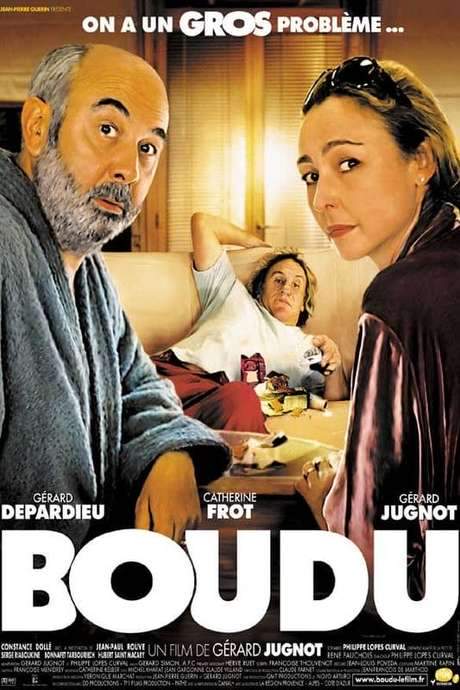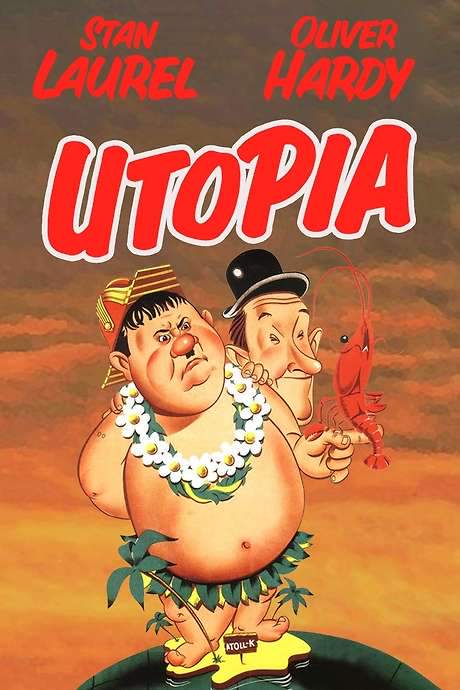
Mon Oncle
Year: 1958
Runtime: 118 mins
Language: French
Mr. Hulot, forever cheerful and bumbling, lives in a cramped city top‑floor flat while his sister embraces a sleek suburban home. He visits the ultra‑modern house only to retrieve his lively nephew, baffled by the glass‑and‑steel nightmare. She tries to convert him, arranging a wife and job, but Hulot remains out of step with modern life.
Warning: spoilers below!
Haven’t seen Mon Oncle yet? This summary contains major spoilers. Bookmark the page, watch the movie, and come back for the full breakdown. If you're ready, scroll on and relive the story!
Mon Oncle (1958) – Full Plot Summary & Ending Explained
Read the complete plot breakdown of Mon Oncle (1958), including all key story events, major twists, and the ending explained in detail. Discover what really happened—and what it all means.
In this quietly satirical and warmly human comedy, Monsieur Hulot emerges as the dreamy, impractical, and utterly beloved uncle to nine-year-old Gérard Arpel. The boy lives with his parents in an ultra-modern, geometric glass-and-steel world—the Villa Arpel—located in a shiny new suburb just beyond the crumbling stones of the old city. The atmosphere is a careful balance of novelty and rigidity, where every surface seems designed more for appearances than for daily comfort.
The Arpels’ home is a shrine to style over substance. The family’s days circle around work, status, and conspicuous possessions, with a running gag centered on a fish-shaped fountain that Mme. Arpel only activates for important guests. The house itself, in its stylistic rigidity, pushes a satirical message about architecture and progress: as M. and Mme Arpel chase modernity, their surroundings are more about show than use. In this vein, the director’s famous line speaks to the heart of the film’s critique:
Les lignes géométriques ne rendent pas les gens aimables.
Villa Arpel is a world of its own—impersonal and meticulously curated. Everything is designed to look good, often at the expense of practicality or comfort. The Arpels have subordinated their individuality to preserve social position and the image of prosperity, a choice that colorizes the suburb with monochrome tones and overcast skies, underscoring the emptiness beneath the gloss.
Across town, a different rhythm dominates. Monsieur Hulot lives in an older, worn-down city district. He is unemployed and travels on foot or on a VéloSoleX, moving through life with a gentle, quirky ease that contrasts sharply with the Arpels’ polished world. Hulot’s informal, unforced way of being stands in quiet opposition to the glossy precision of Villa Arpel, highlighting the film’s central tension between authenticity and appearance.
Gérard, utterly bored by the sterile routine of life with his parents, finds a natural kinship with his uncle. Hulot, though often as impulsive as a child himself, is comfortable with the boy’s energy and mischief. He becomes a companion to Gérard, even as he struggles to rein in the boy’s pranks around adults and his schoolfriends, who revel in the harmless turbulence of youth.
The Arpels’ plans begin to tighten around the pair. They scheme to tether Hulot to family life and to the business pressures of Plastac, the automatized workplace that embodies their faith in progress and efficiency over lived experience. This push toward duty marks a key shift in the dynamic, foreshadowing the clash between a life of ease and a life of obligation.
The film’s rich world is populated by a chorus of supporting figures. Georgette, the housekeeper, is played by [Yvonne Arnaud], who brings a human warmth to the arid elegance of the Arpel household. Other faces—such as the various neighbors, the local workers, and the minor players who populate Gérard’s world—also pepper the narrative with small, telling details that flesh out this contrast between two ways of living.
The tone remains gently transgressive, playful, and observant. With its subdued color palette and its emphasis on the strange poetry of everyday objects—stepping stones in inconvenient locations, loud kitchen appliances, and furniture that seems to mock practical comfort—the film builds a world where the pursuit of modern living can feel almost magical, yet profoundly empty. The story keeps returning to the tension between outward polish and inner life, between social performance and genuine humanity.
Throughout, the characters move through scenes that reveal the essence of Tati’s satire. The old city’s ramshackle charm, the gleaming, machine-like glamour of Villa Arpel, and the unpredictable, unguarded warmth of Hulot’s world all intersect in moments of quiet humor and subtle critique. The narrative never shouts its message; it invites viewers to notice how a society that prizes appearances can overlook the simple, imperfect humanity that truly matters.
-
Monsieur Hulot remains the film’s whimsical observer, a catalyst for gentle disruption in a meticulously controlled environment.
-
Monsieur Arpel stands as the emblem of the modernist dream turned into a social posture.
-
Madame Arpel embodies the chic, status-conscious seriousness that underpins the household.
-
[Gérard Arpel] remains the restless, curious youth around whom the story’s moral questions orbit.
-
Georgette anchors the human warmth that lingers beneath the glossy surface.
This is a film that invites you to look closely: at how spaces shape behavior, how modernity can feel both dazzling and hollow, and how a boy, his uncle, and a handful of ordinary characters can illuminate a broader truth about love, life, and the pull between comfort and meaning.
Last Updated: October 09, 2025 at 10:43
Unlock the Full Story of Mon Oncle
Don't stop at just watching — explore Mon Oncle in full detail. From the complete plot summary and scene-by-scene timeline to character breakdowns, thematic analysis, and a deep dive into the ending — every page helps you truly understand what Mon Oncle is all about. Plus, discover what's next after the movie.
Mon Oncle Timeline
Track the full timeline of Mon Oncle with every major event arranged chronologically. Perfect for decoding non-linear storytelling, flashbacks, or parallel narratives with a clear scene-by-scene breakdown.

Similar Movies to Mon Oncle
Discover movies like Mon Oncle that share similar genres, themes, and storytelling elements. Whether you’re drawn to the atmosphere, character arcs, or plot structure, these curated recommendations will help you explore more films you’ll love.
Explore More About Movie Mon Oncle
Mon Oncle (1958) Scene-by-Scene Movie Timeline
Mon Oncle (1958) Movie Characters, Themes & Settings
Mon Oncle (1958) Spoiler-Free Summary & Key Flow
Movies Like Mon Oncle – Similar Titles You’ll Enjoy
Freedom-Oleron (2001) Film Overview & Timeline
My American Uncle (1980) Film Overview & Timeline
Boudu (2005) Ending Explained & Film Insights
A House of Your Dreams (2006) Movie Recap & Themes
Hôtel de France (1987) Ending Explained & Film Insights
Les Voisins (1987) Full Movie Breakdown
Papa, Mama, My Wife and Me (1955) Ending Explained & Film Insights
À Nous la Liberté (1931) Movie Recap & Themes
Jour de Fête (1949) Story Summary & Characters
Mon oncle Antoine (1971) Film Overview & Timeline
Monkeys, Go Home! (1967) Story Summary & Characters
Hotel Paradiso (1966) Ending Explained & Film Insights
PlayTime (1967) Complete Plot Breakdown
Monsieur Hulot’s Holiday (1953) Detailed Story Recap
Utopia (1951) Full Movie Breakdown

















